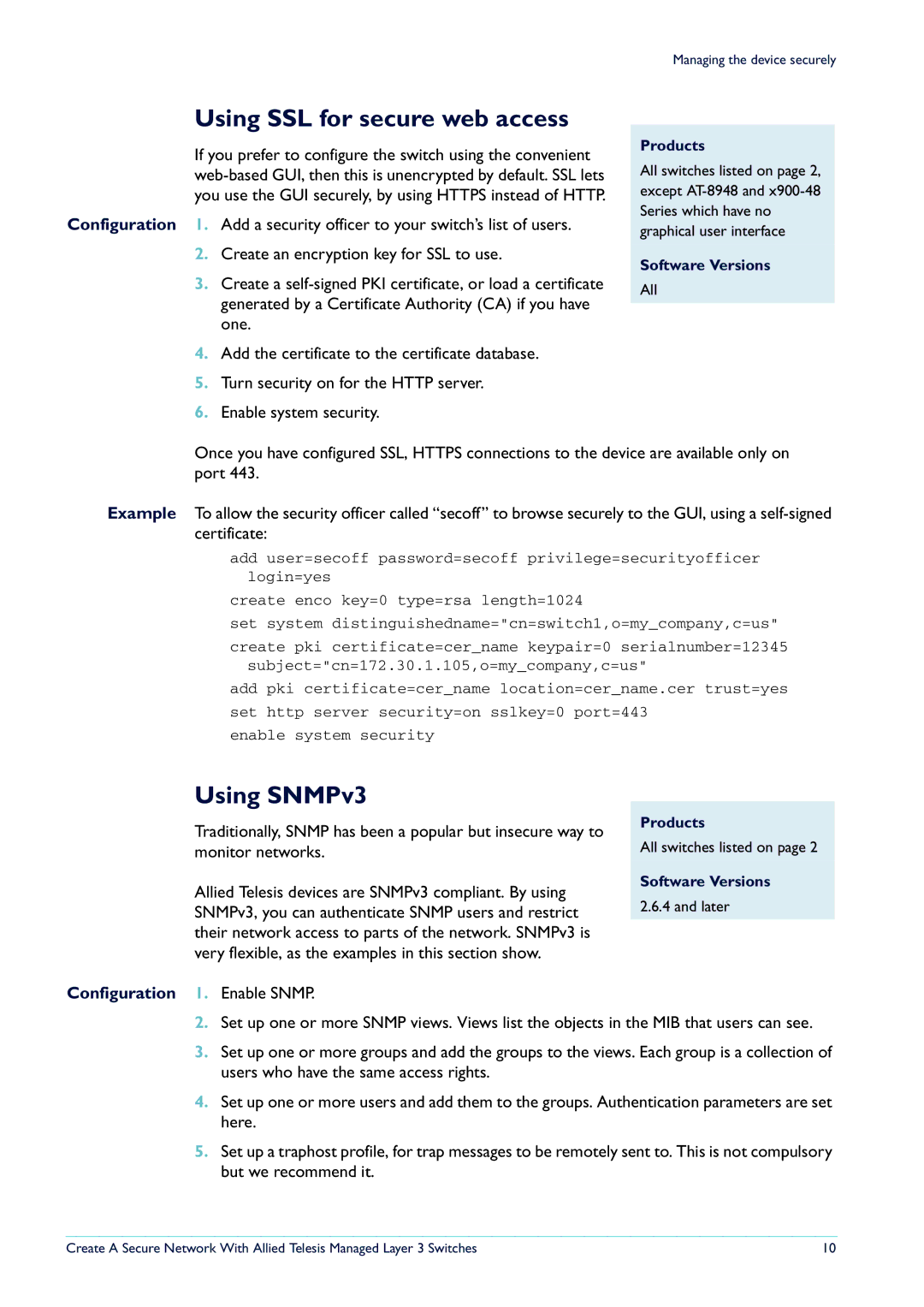
|
| Managing the device securely | |
Using SSL for secure web access |
| ||
Products | |||
If you prefer to configure the switch using the convenient | |||
All switches listed on page 2, | |||
you use the GUI securely, by using HTTPS instead of HTTP. | except | ||
Configuration 1. | Add a security officer to your switch’s list of users. | Series which have no | |
graphical user interface | |||
|
| ||
2. | Create an encryption key for SSL to use. | Software Versions | |
3. | Create a | ||
All | |||
| generated by a Certificate Authority (CA) if you have | ||
|
| ||
| one. |
| |
4. | Add the certificate to the certificate database. |
| |
5. | Turn security on for the HTTP server. |
| |
6. | Enable system security. |
| |
Once you have configured SSL, HTTPS connections to the device are available only on port 443.
Example To allow the security officer called “secoff” to browse securely to the GUI, using a
add user=secoff password=secoff privilege=securityofficer login=yes
create enco key=0 type=rsa length=1024
set system distinguishedname="cn=switch1,o=my_company,c=us"
create pki certificate=cer_name keypair=0 serialnumber=12345 subject="cn=172.30.1.105,o=my_company,c=us"
add pki certificate=cer_name location=cer_name.cer trust=yes
set http server security=on sslkey=0 port=443
enable system security
Using SNMPv3
Traditionally, SNMP has been a popular but insecure way to monitor networks.
Allied Telesis devices are SNMPv3 compliant. By using SNMPv3, you can authenticate SNMP users and restrict their network access to parts of the network. SNMPv3 is very flexible, as the examples in this section show.
Products
All switches listed on page 2
Software Versions
2.6.4 and later
Configuration 1. Enable SNMP.
2.Set up one or more SNMP views. Views list the objects in the MIB that users can see.
3.Set up one or more groups and add the groups to the views. Each group is a collection of users who have the same access rights.
4.Set up one or more users and add them to the groups. Authentication parameters are set here.
5.Set up a traphost profile, for trap messages to be remotely sent to. This is not compulsory but we recommend it.
Create A Secure Network With Allied Telesis Managed Layer 3 Switches | 10 |
